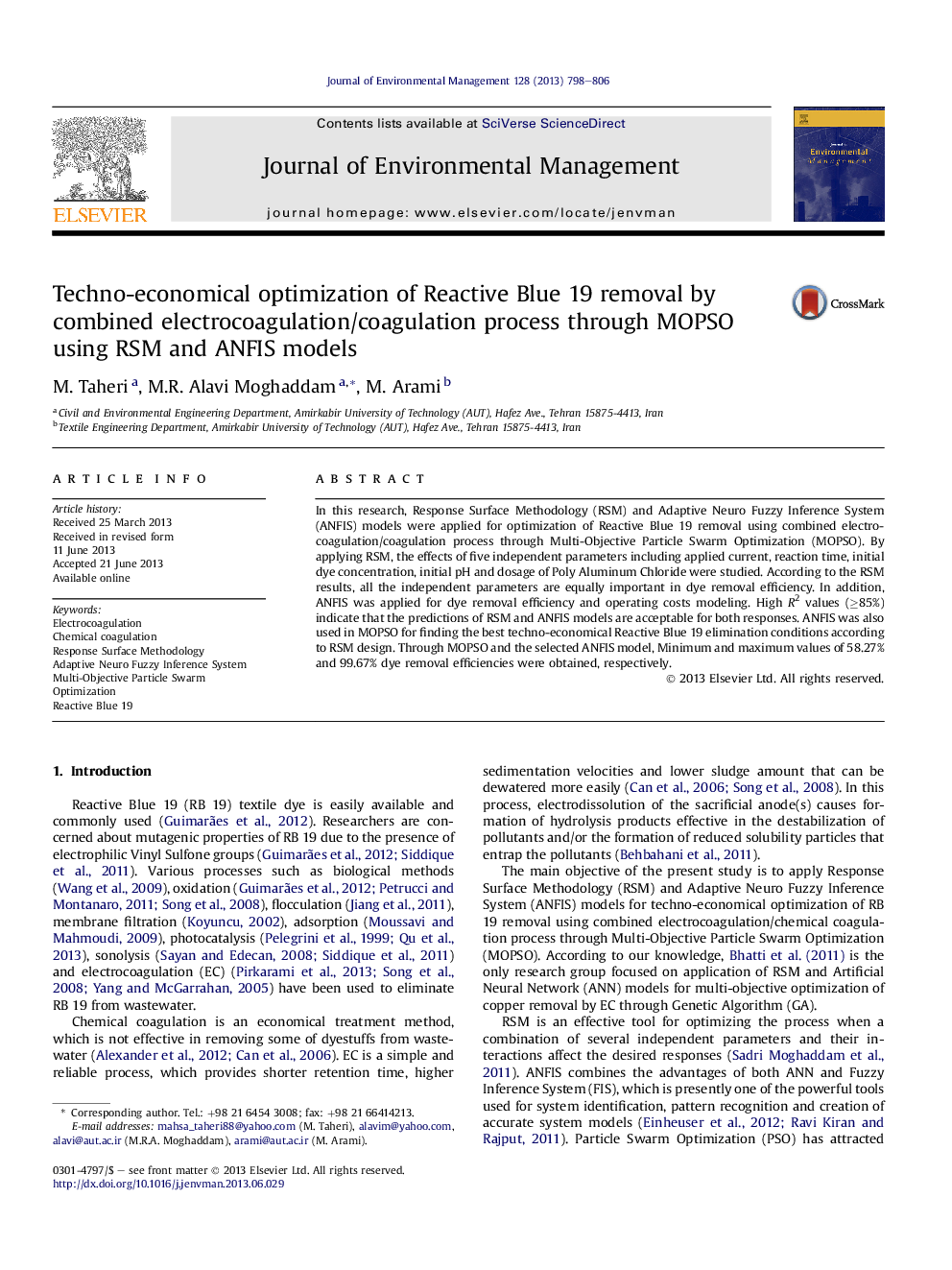| Article ID | Journal | Published Year | Pages | File Type |
|---|---|---|---|---|
| 7484531 | Journal of Environmental Management | 2013 | 9 Pages |
Abstract
In this research, Response Surface Methodology (RSM) and Adaptive Neuro Fuzzy Inference System (ANFIS) models were applied for optimization of Reactive Blue 19 removal using combined electrocoagulation/coagulation process through Multi-Objective Particle Swarm Optimization (MOPSO). By applying RSM, the effects of five independent parameters including applied current, reaction time, initial dye concentration, initial pH and dosage of Poly Aluminum Chloride were studied. According to the RSM results, all the independent parameters are equally important in dye removal efficiency. In addition, ANFIS was applied for dye removal efficiency and operating costs modeling. High R2 values (â¥85%) indicate that the predictions of RSM and ANFIS models are acceptable for both responses. ANFIS was also used in MOPSO for finding the best techno-economical Reactive Blue 19 elimination conditions according to RSM design. Through MOPSO and the selected ANFIS model, Minimum and maximum values of 58.27% and 99.67% dye removal efficiencies were obtained, respectively.
Keywords
Related Topics
Physical Sciences and Engineering
Energy
Renewable Energy, Sustainability and the Environment
Authors
M. Taheri, M.R. Alavi Moghaddam, M. Arami,
